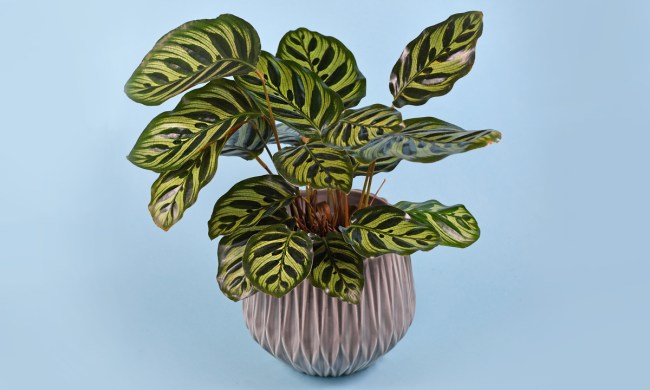Anything kept in an environment with moisture and limited ventilation is susceptible to mold. And, unfortunately, that includes your houseplants. Mold on indoor plants is more common than you might think, and there are effective ways to get rid of it and prevent future recurrences. If you have a plant with a little mold, don’t give up just yet! Read on to find out what to do about mold in plant soil.
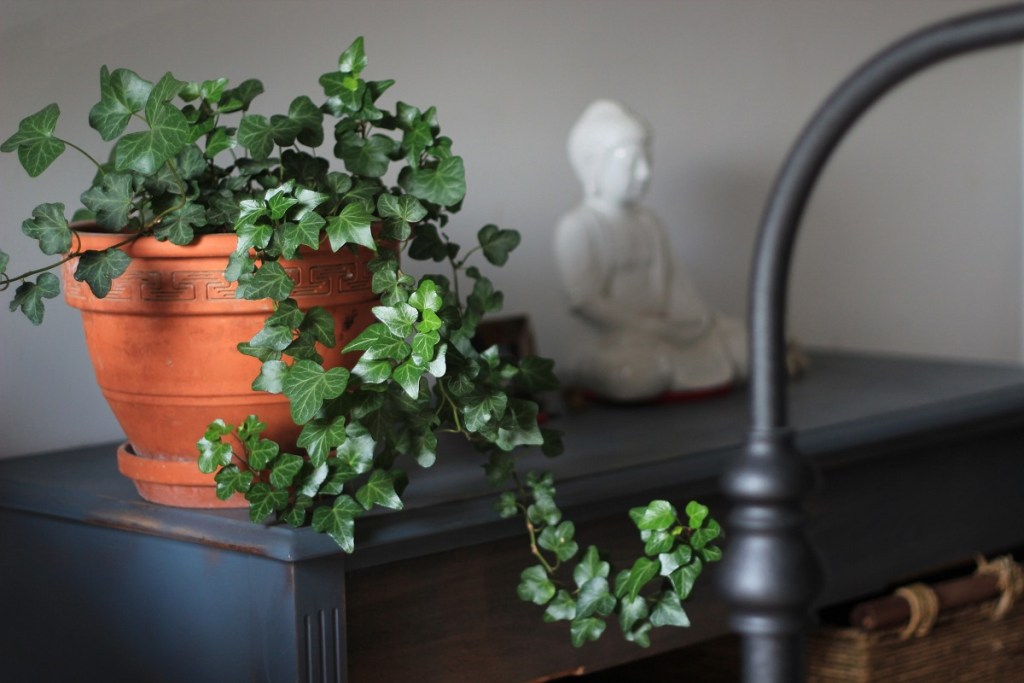
Why mold grows on leaves and soil
To understand how mold develops, we need to look at why mold occurs on the leaves and soil in the first place.
The most common type of plant mold is a white mold in potted soil that develops on the surface due to things like inadequate drainage, constantly wet soil, and poor ventilation. This mold is relatively harmless most of the time; however, white soil mold does indicate that there is a larger issue with your plant’s environment that needs to be solved.
Another common mold that can affect your indoor plants is powdery mildew, which often shows up on the top sides of leaves. This mold is made up of spores that give the greenery a dusty appearance. Luckily, these spores are most often transferred in the wind when found outside. That means that unless you have an incredibly drafty space, the mold is less likely to go from one plant to another; however, keep in mind that it is still possible. So, you’ll want to remove this mold as quickly as possible once you identify it.
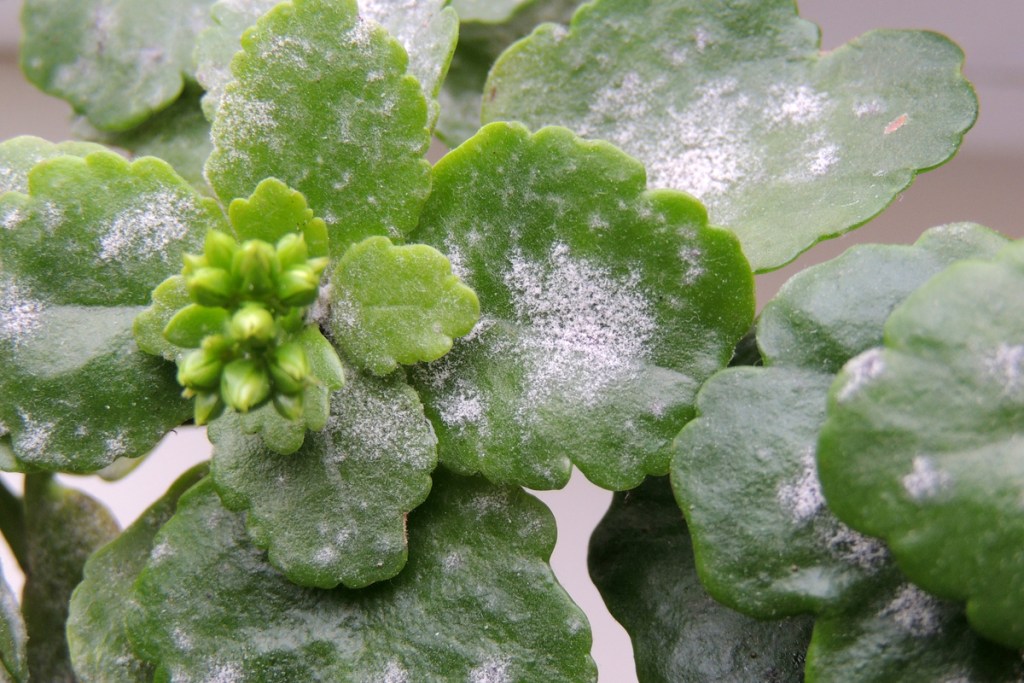
How to identify plant mold
Mold on indoor plants will present differently depending on the type it is. There are kinds that affect the soil, kinds that affect the foliage, and kinds that affect a mixture of both. Luckily, none of them are particularly difficult to identify so long as you’ve been monitoring your plant regularly. Otherwise, they could easily fly under the radar until it’s too late. Here is how to identify the most common molds:
Powdery mildew: Powdery mildew appears as small white spores, often giving the leaves of your plant a dusty look. It will often start on the tops and bottoms of leaves; however, powdery mildew can eventually spread to the stems and fruits/flowers of the plant as well, causing long-term damage like twisted and disfigured foliage.
Gray mold: Gray mold also has spores that are dusty in appearance; but unlike powdery mildew, gray mold will initially affect the parts of the plants that are near the surface of the soil. It often infects plants that are already suffering from damage and have dead tissue that the spores can land in and thrive. Infected areas have the potential to grow very quickly.
Sooty mold: Sooty mold can be identified by dark green to black sooty-looking patches that appear around the base of the plant and on the surface of the soil. This kind of mold often presents when a plant is infested with sap-feeding insects, and the patches could have a negative impact on your plant’s photosynthesis process.
White mold: White mold is fuzzy in appearance, similar to the kind of mold you might find on food that goes bad, and grows on the surface of the soil. This kind of mold lets you know that the conditions of the soil are too damp for your plant, but it’s relatively harmless overall.

How to remove powdery mildew from your plants
How you remove the mold from your plants will vary depending on the kind of mold you’re looking to tackle. Although each of them affects plants, they’re caused by different things and as such require unique approaches to manage the situation. Some have more simple solutions while others will require more patience.
Step 1: If your plant is suffering from powdery mildew growth, you may need to move it to a brighter location in your home. This type of mold grows well in shade, so increasing the amount of natural light (or artificial light via grow lights) will help prevent the mold from spreading while you work to clear it up.
Step 2: If it’s a small amount of powdery mildew, try watering from above so that the water helps clean the leaves. Keep in mind that this may not resolve the problem fully. Too much water on the leaves can have adverse effects.
Step 3: Then, apply an approved fungicide, which should be able to clear it up nicely.
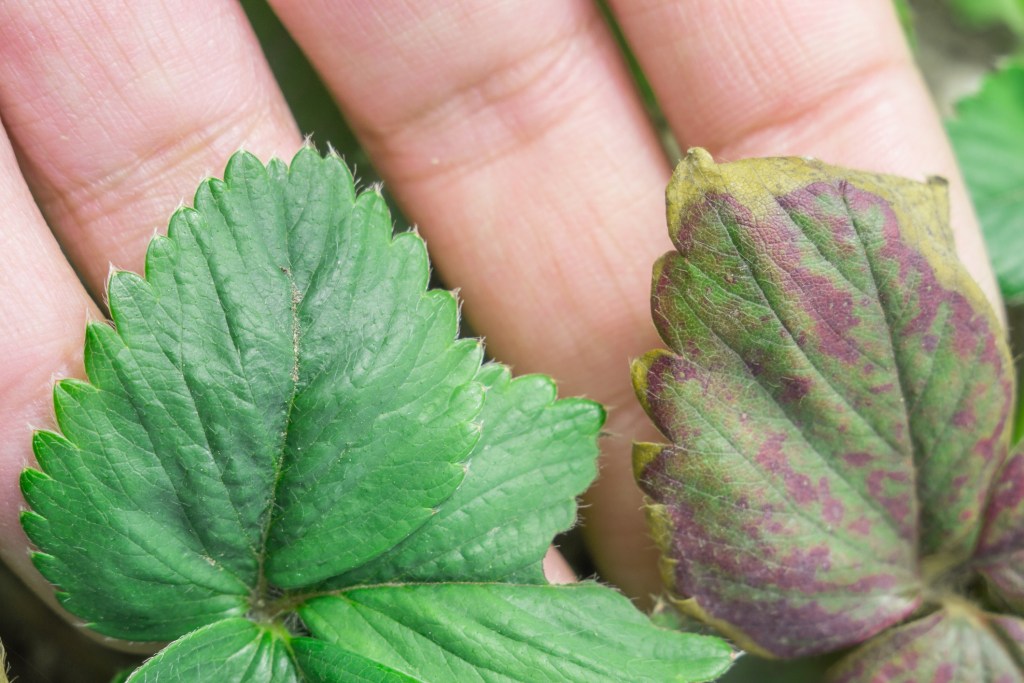
How to remove gray mold from your plants
Gray mold is a bit more complex, since the plant it infects will likely already be diseased or have some damaged dead tissue.
Step 1: Plants suffering from gray mold should be immediately isolated once you realize there’s a problem.
Step 2: Remove any damaged or dead tissue from the plant with a pair of sterilized shears or scissors.
Step 3: Apply an approved fungicide to the plant while following the directions on the bottle. Depending on the specific fungicide used, you should reapply every one to three weeks until the mold is gone.

How to remove sooty mold from your plants
The process you follow to remove sooty mold will be determined by the size of the infestations.
Step 1: If there aren’t a lot of sap-feeding insects, simply remove them either with your hands or a pair of sterilized tweezers.
Step 2: If there are a lot of them, though, you’ll need to apply an insecticidal soap solution, making sure to follow the directions carefully.
Step 3: Once the insects have been taken care of, use a clean cloth, dampened with either water or a diluted soap solution, to clean off the sooty patches and rinse the leaves.
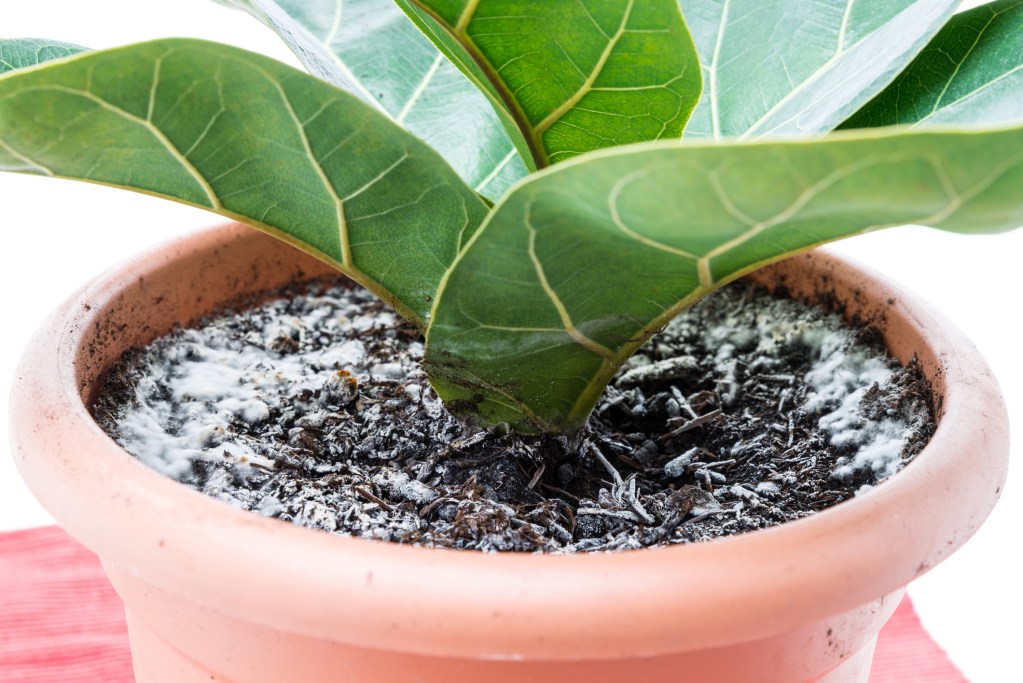
How to remove white mold from your plants
Fuzzy white soil mold, since it’s relatively harmless to your plant, has the easiest solution. Simply scrape off the infected part of the soil (if there isn’t a lot of white mold) and you’re good to go!
With a larger amount of white mold, it would be best to repot your plant in fresh soil. Unfortunately, since mold spores exist naturally in standard potting soil, there isn’t any way to fully remove the presence of white mold.

How mold affects those with allergies
Mold on indoor plants has the potential to cause the same noticeable allergy symptoms such as itching, sneezing, congestion, dry skin, and more. Here's what you need to know:
- Because these molds are indoors, the symptoms can be experienced any time of the year as long as the disease is around.
- Like other types of molds, powdery mildew and white molds can trigger asthma if they reach the lungs or breed for a lengthy period of time.
- As such, you never want to take a chance when it comes to mold on indoor plants. If you have a mold allergy, take all the precautions you need to clear it up, even if that means throwing away the entire plant.
- Molds can be cleared up and treated, but not even a plant is worth risking a severe allergic reaction.
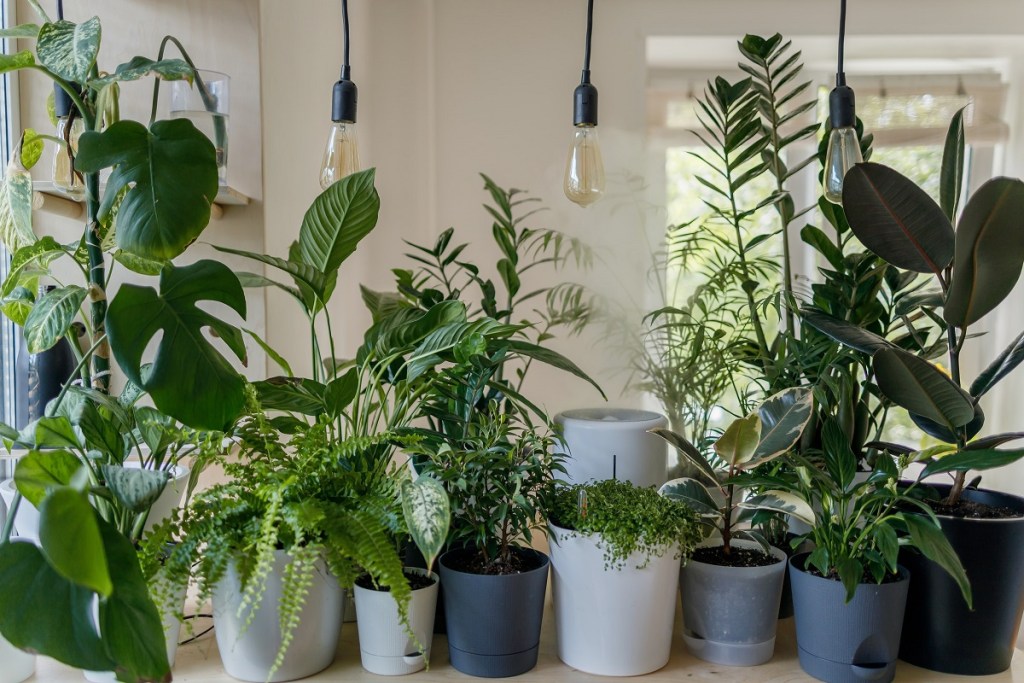
How you can prevent mold on soil
At the end of the day, keeping a close eye on your plants will help keep mold infestations at bay. Here are a few steps to implement into your indoor gardening routine to minimize mold.
Step 1: Make sure that you're not going overboard with watering, as soggy soil makes a welcoming environment for mold. If your soil feels wet on watering day, it's best to skip watering.
Step 2: Along with soil moisture, also be vigilant with humidity levels. Using a hygrometer to measure humidity can be helpful. Readings of over 60% can indicate a hospitable environment for mold.
Step 3: Ensure that your plants are getting enough light, either by way of natural light or grow lights.
Step 4: Air ventilation is also important, so open windows or consider using air filtration or fans to circulate air.
Whether you’ve experienced mold on indoor plants or not, it can be beneficial to know how to manage and prevent mold in plant soil and on foliage. Mold often thrives when the plant has received improper care or isn’t in the best condition. Keep an eye on your plants, checking them every day or two to make sure they’re doing okay. Maintaining proper care is key to preventing future mold on your indoor plants.



